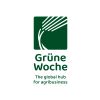PCV2 genotype definition creates exciting opportunities
PCV2 genotype definition creates exciting opportunities
The EU funded research consortium on Porcine Circovirus Diseases (PCVD) has recently proposed a new framework for international agreement on consistent naming for existing and future isolates of porcine circovirus 2 (PCV2), which will create significant opportunities for international research teams to compare and contrast findings. The methodology is based on the proportion of nucleotide sites at which two sequences being compared are different (p-distance). This value is found by dividing the number of nucleotide differences by the total number of nucleotides compared. The potential cut-off values to distinguish different genotypes are established through the construction of a p-distance/frequency histogram.
The PCVD project management team, lead by Prof Gordon Allan, warned against complacency: Porcine Circovirus Diseases continue to be a major problem on many pig farms worldwide and although significant progress has been made in understanding the virus there are still gaps in our understanding which the virus continues to exploit. Virus elimination remains a distant dream but the excellent response to vaccination raises serious unanswered questions about the sub-clinical effects of the virus and the duration that these have been affecting pig production.
The Framework 6 PCVD project has published its 2008 newsletter that updates on progress in a number of key areas of investigation into the interaction between PCV2 and pigs. The Consortium continues to make good progress as it draws this EU Framework 6 programme of research to a conclusion in early 2009.
Read the full press release: www.pcvd.org/documents/2008_07_PCVD_PR.pdf
The Control of Porcine Circovirus Diseases (PCVDs): Towards Improved Food Quality and Safety is EU Project No.: 513928 and has been funded through the Sixth Framework Programme under Priority SSP/5.4.6 (Priority 5. Food Quality and Safety. The project started in December 2004 is being delivered by a multidisciplinary consortium from academia and industry with a total of 15 partners from North America and the EU. Reports from all work packages in the project are now available in the results section of the project website www.pcvd.org.








